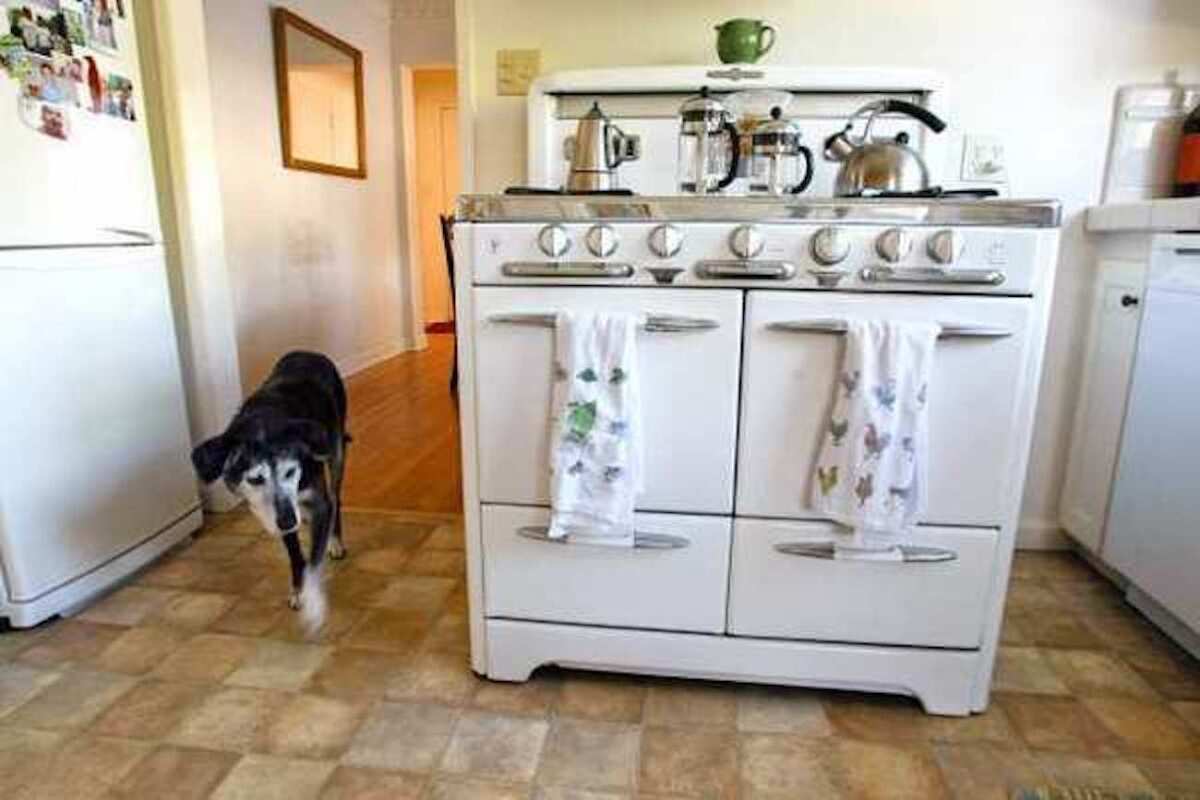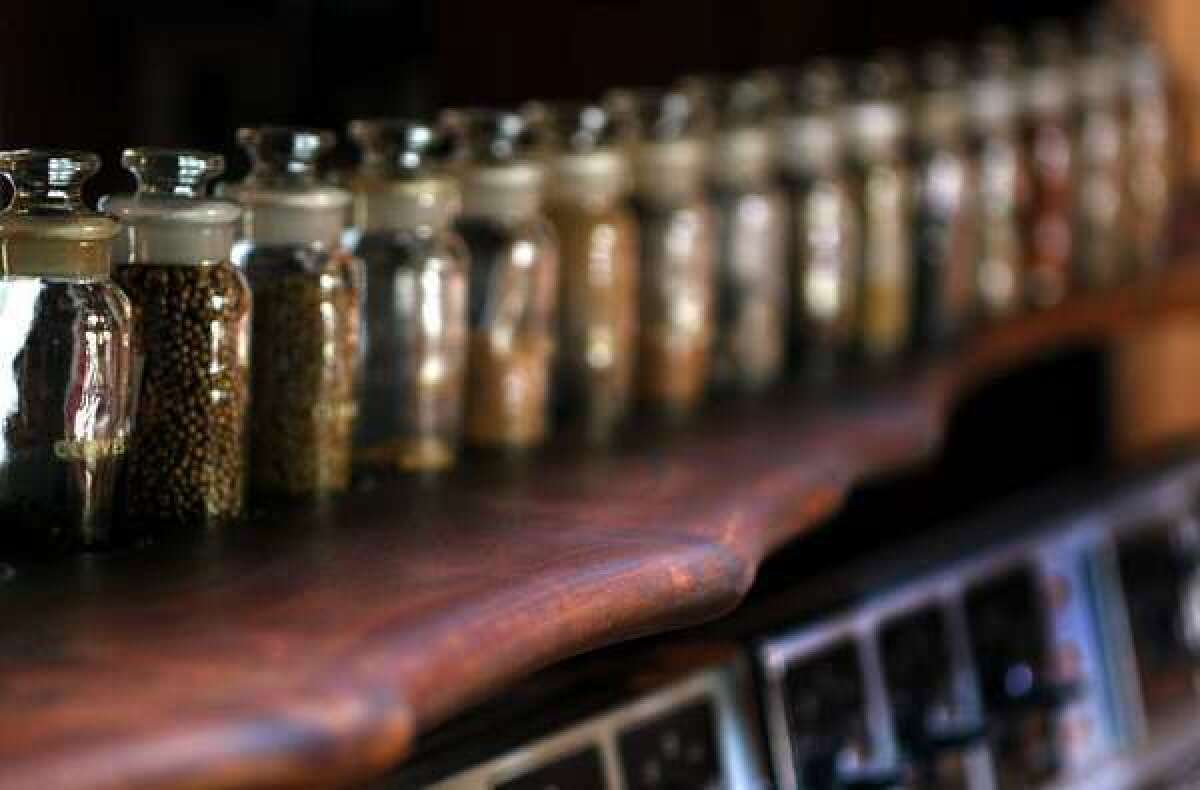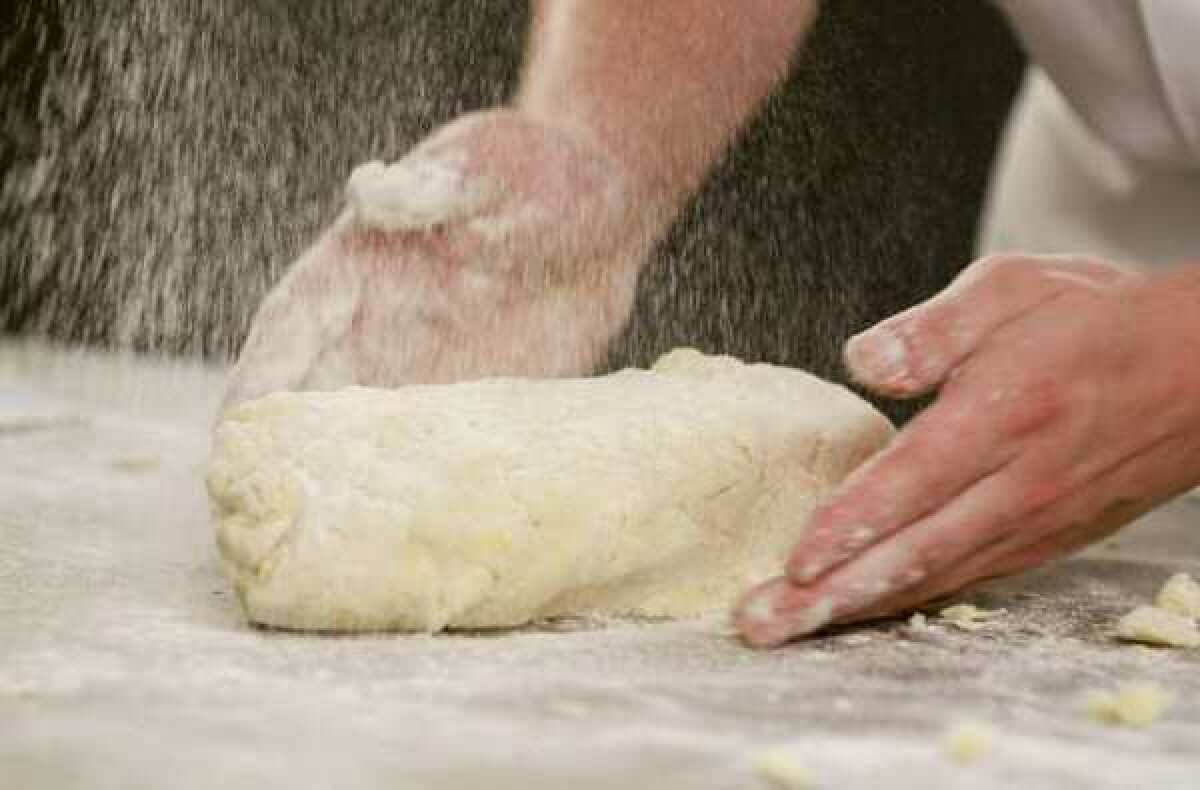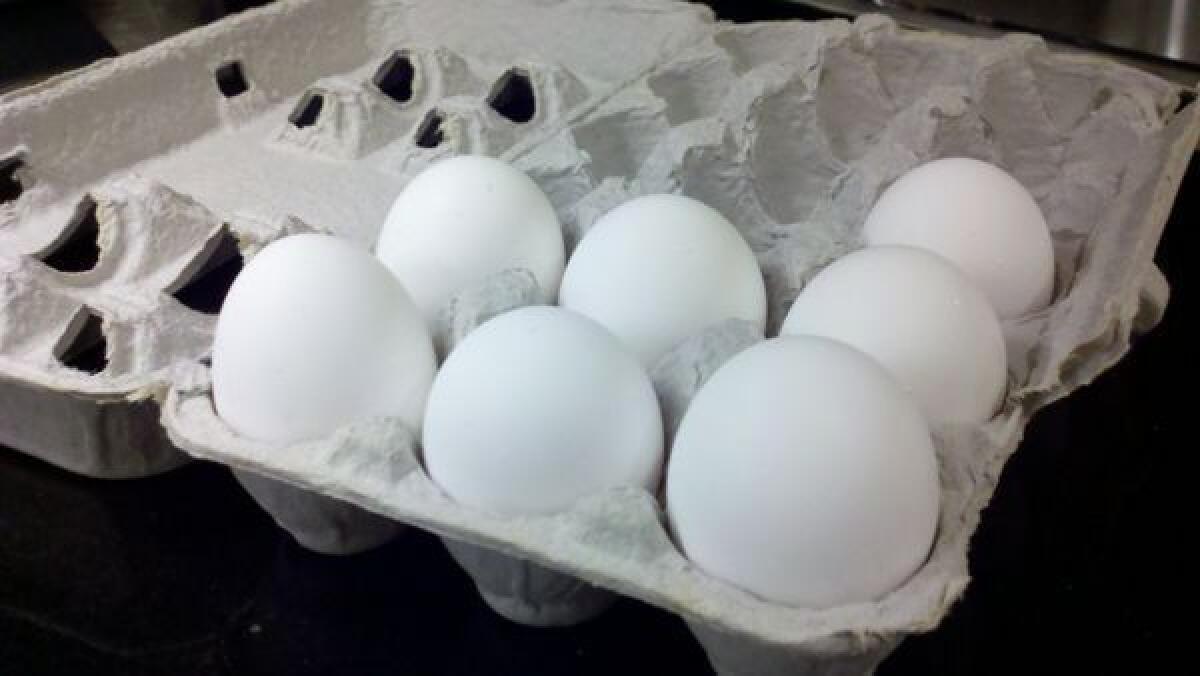7 ways to reboot your kitchen for the new year

New year’s is a good time to check and recalibrate your oven’s accuracy.
- Share via
There's no time like the start of a new year to take hard look at your kitchen. Here in the Test Kitchen, this is the time we clean out the refrigerators. It's when we check our ovens for calibration and go over our kitchen tools — from appliances to cutting boards to knives — to make sure everything is working properly. This is also when we check our ingredients — dried spices and herbs, cooking and finishing oils, even our flours, to make sure nothing has gone stale.
Of course, these are things we like to keep on top of throughout the year. But there's something about having a clean kitchen at the start of the year that puts cooking and baking — perhaps even dietary habits — in a fresh perspective. Here are a few ways to reboot your kitchen for the year ahead.
Lemons: a natural cleanser

Wally Skalij / Los Angeles Times
Sure they're great for flavoring, but lemons are more than a one-trick pony in the kitchen. They're indispensable as a natural kitchen cleanser. For a quick garbage disposal deodorizer, chop up a lemon (or lemon peel, or orange) and throw it in the disposal before running. Your kitchen will go from funky to fresh in no time.
Soak mineral deposits, scum and buildup with a little lemon juice — the juice will soften the build-up for easy removal. And use lemon juice squeezed into a cup of water to clean plates before serving; the acidulated water easily removes fingerprints and dirt.
The uses are seemingly endless. Combine lemon juice with salt, or make pastes with the juice and baking soda to clean everything from copper to your oven.
Caring for your cutting boards
Myung Chun / Los Angeles Times
With all the prep work and cooking we do in the Test Kitchen, we really put our cutting boards through their paces. Maintaining a clean cutting board at all times is important, and it's not complicated.
Whether you prefer wood or plastic, as soon as you're done using a cutting board, rinse it with warm water to remove any surface dirt, and scrub the board lightly with a little soap. For wooden boards, scrub following the grain of the wood.
After washing the board, sanitize it to remove any germs. There are a number of ways to sanitize and deodorize, using either vinegar, hydrogen peroxide or cut lemons. In the test kitchen, we sanitize using a diluted bleach solution, about 1 tablespoon bleach to 1 gallon cool water. Spray or wipe the solution on the board and set it aside for a few minutes before rinsing off with hot water. Never run your cutting boards — wood or plastic — through the dishwasher; the wash cycle is bad for wood, and it can warp plastic boards.
Once the board is clean, prop it up vertically so it dries completely on all sides. Never put away a damp cutting board. To keep a wooden cutting board from drying out and splitting from excessive use or neglect, wipe it down occasionally with a mineral oil or a blend you can find at a kitchen or restaurant supply store.
If your cutting board is stained, don't worry. It's usually easy to clean. For wooden cutting boards, combine coarse salt and baking soda with enough water to make a paste. Scrub the paste into the stain following the grain of the wood, then rinse with warm water. For plastic boards, use a bleach solution and let the board sit until the stain comes out, then rinse and clean.
Freshen up your spices

Gina Ferazzi / Los Angeles Times
Nothing can kill a good recipe faster than a lack of spice. Even kitchen staples such as dried herbs and spices have an expiration date and can lose their potency over time. Properly stored, spices can last a year or two at most, with whole spices generally lasting longer than ground. Store your spices in a cool, dry place, away from moisture and keep them tightly sealed.
Whenever you open a new spice jar, date the back so you can keep tabs on how long it's been open. Once a year, rummage through the collection and check on them. Spices that still have some potency should have their original color, with a vibrant smell and fresh taste. Old or expired spices often lose their color, becoming dull, and have very little, if any, smell or flavor. Toss the old spices, replacing them as needed.
Like spices, baking soda and baking powder are only as good as their freshness when it comes to baking in the kitchen. Used in everything from cakes and biscuits to doughnuts and waffles, they're the ingredients that help a dough rise as it bakes. And like any ingredient, they can lose their effectiveness as they age -- there's nothing worse than having a cake fail because the ingredients weren't any good.
Because they do lose effectiveness with time, it's best to buy both baking soda and powder in small quantities. Store both in sealed containers in a cool, dry place, and label when you've opened them (baking powder can start to lose its effectiveness within a few months of opening).
Store your expensive oils properly

Peter DaSilva / For The Times
In many kitchens, you'll find the cook's go-to cooking oil stored next to the stove, or perhaps nearby in a cabinet. If you cycle through oil quickly in your kitchen, this should be fine. But if you only cook rarely, or have an expensive oil lying around, you might want to rethink storage.
For your expensive and rarely used oils, refrigerate them. Because of their high fat content, oils can go rancid quickly when left at room temperature or exposed to light (this is one reason many oils are packaged in dark bottles). Refrigerating them extends their shelf life.
Keep your flour fresh

Mark Boster / Los Angeles Times
Storing flour may not be something you tend to think about often in the kitchen, but, like oil, it can get stale if not kept properly. Here are some tips for storage:
Basic flours (including all-purpose, cake, pastry and bread flours): These are generally more stable for storage than whole grain or alternative flours. Before grinding, the grains are stripped of the bran and germ, leaving only the endosperm to be processed. The stripping (and optional "bleaching," or oxidizing) gives the flour its white or creamy color. Store these flours in a sealable plastic bag or airtight container, labeled with the purchase date. Keep them at cool room temperature (no higher than 75 degrees); the flour should keep for up to a few months. You can also freeze the flour; simply bring it back to room temperature before using.
Whole grain and alternative flours (including whole wheat, barley, oat and rye): These contain more of the grain, starch or nut, increasing the flavor, color and texture of the flour. The fat content also is higher because of the oil in the grain, which makes the flour less stable and prone to rancidity. Because these flours can go bad quickly, check to see whether the packaging has a processing date before buying; many producers now date their flours for freshness. Store these flours in a sealable plastic bag or airtight container in the freezer; do not store at room temperature. Bring the flour to room temperature before using.
If you're wondering if your flour has gone rancid, simply smell it. Rancid flour will have a definite "stale" or "off" smell.
How to store fresh eggs

Alex Broking / Los Angeles Times
Next time you run to the store for eggs, avoid storing them in the handy open plastic egg holder on the door of your refrigerator. Keep the eggs in their carton, on a shelf, toward the back of the fridge.
Eggshells are porous, and they absorb odors easily and can lose moisture. Keeping eggs in their closed carton helps to protect them from stray odors and gives them a little cushioning to protect them from cracking. Storing eggs on a refrigerator shelf will keep them consistently colder than storing on a door, where the temperature is often not cold enough and fluctuates each time the refrigerator is opened.
Keep your knives sharp in storage
Noelle Carter / Los Angeles Times
Have a knife block with vertical slots at home? To keep the sharp edge on the blade when storing, house your knives so the edge of each blade is facing up. When knives are stored with the edge facing downward, the edge has to slide along the bottom of the slot as the knife is housed, dulling the blade.
You might also consider a horizontal knife block (the slits run side to side). I picked one up a few years ago for my extra knives at home and fell in love with it. Or spring for a magnetic knife rack if you've got the wall space and want to display your blades.
Love cooking as much as I do? Follow me on Twitter: @noellecarter
ALSOFrom one rotisserie chicken, 25 ideas for dinner
Check out the thousands of recipes on our Recipe Database
We kitchen-test and taste-test 8 prepare-at-home meal delivery services
Eat your way across L.A.
Get our weekly Tasting Notes newsletter for reviews, news and more.
You may occasionally receive promotional content from the Los Angeles Times.








